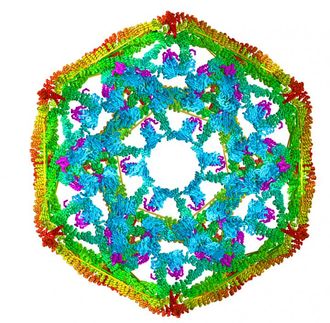Nanotechnology with proteins
Göttingen scientists test new method of constructing two-dimensional structures
Advertisement
For over two decades, scientists have been using DNA to design nanomaterials. Researchers from the University of Göttingen and the Medical School Hanover, both in Germany, have now discovered a new method to use proteins to construct two-dimensional webbings.

Electron micrograph of a rough aluminium surface coated with a regular clathrin webbing (size is approximately 1.5 x 1.5 micrometers).
Universität Göttingen
The use of proteins in nanotechnology is a largely unexplored area. "However, due to their complex structure, proteins offer many possibilities to develop novel materials with unique properties," explains Dr. Iwan A.T. Schaap from Göttingen University’ Third Institute of Physics. The protein clathrin is normally involved in the formation of transport vesicles inside cells. The scientists show in their study that clathrin can also be used to form two-dimensional webbings on almost any type of surface. "This could revolutionize the design of biological sensors and biosynthetic reactors," says Dr. Schaap.
After the researchers composed the clathrin-building blocks into a regular hexagonal lattice with a periodicity of only 30 nanometers, they developed a stabilization scheme. "It is essential that the protein structures are robust so that the nanotechnological devices will have a long lifetime and shelf-life," explains Dr. Schaap. Finally, the researchers showed how the clathrin webbings can be converted into functional devices by the binding of small metallic particles and active biomolecules. The researchers will continue their work on these novel protein structures with the aim of developing more efficient nanotechnological devices that can be used for sensing applications and the synthesis of biomolecules.



























































